The Sun, Vitamin D & Nitric Oxide

In a nutshell, the sun is good for you, m'kay.
When I was growing up in South Africa it was natural to be in the sun for a good part of the day without even trying, however as I grew up and “learned” it became “natural” for me to actively avoid the sun when I was outside.
The result of this change was that when I was younger my skin had a good coloration and glow, but when I was in my teens through to my mid-twenties my skin was certainly on the pale side and riddled with acne.

But the way luck would have it, slowly but surely I learned the truth about the sun and its now obvious benefits. To map out a picture, let's take a dive into some charts!
First of all, more people die in winter when there is less sun compared to summer when there is more sun. The below chart compares northern, southern, and equatorial countries death rates vs the 12 months of the year:
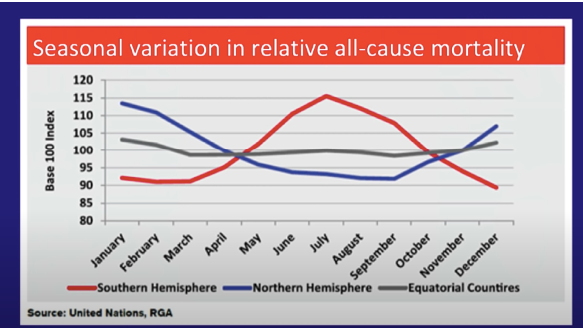
The next set of charts shows how increased sun exposure decreases all-cause mortality:
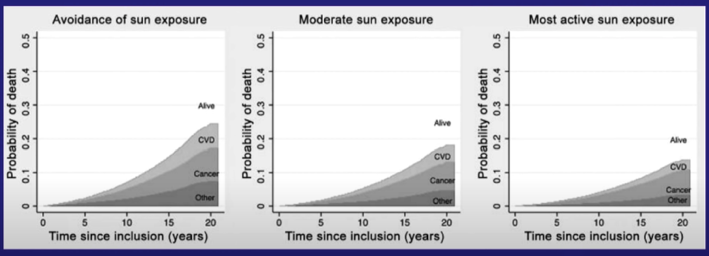
To dig into this topic a bit further, Dr. Paul Mason (whose lecture these slides are from) notes that smokers who have active sun exposure have an equivalent level of mortality as non-smokers who have the lowest levels of sun exposure. In essence this means that if you smoke, but get good amounts of sun exposure, you have a better chance of living longer than someone who actively avoids the sun!
Generally speaking, when one thinks about the benefits of the sun the first thing which will pop into mind is Vitamin D. But later we'll show that perhaps Vitamin D isn't the real treasure unlocked by the sun.
Vitamin D:
The below chart shows that people who have low levels of Vitamin D are 2x more likely to die than those with higher levels of Vitamin D.

The next chart was created by following 10,000 German men aged 50 to 74, they were tracked for 9 years. Again we see that the lower the Vitmin D levels, the higher the mortality rate, aka they die sooner:
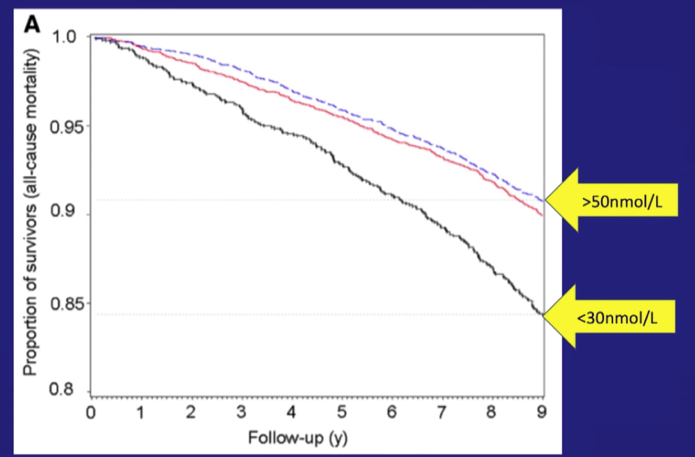
However, it could very well be that it isn't Vitamin D that gives the improved longevity but rather another factor that tends to correspond closely to improved Vitamin D levels.
Enter... Nitric Oxide.
Nitric Oxide:
Nitric Oxide relaxes blood vessels, and in the below chart, we have a comparison between "real" UVA vs "synthetic" UVA. "Real" comes from the sun, while the "synthetic" comes from artificial light sources.
Both of these light sources reduce blood pressure, but real UVA has a more potent and lingering impact on the body after exposure.

Similarly to Vitamin D, Nitric Oxide levels in ones body will tend to be higher in the summer months due to sun exposure, and because of this, blood pressure tends to be lower in summer months and higher in winter months. The below chart shows how blood pressure tends to vary during the year (peaking in winter):
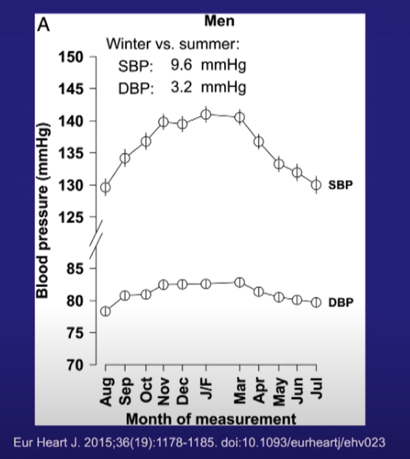
And following the same line of thought, high blood pressure can bring about heart attacks and strokes. So again we see that in winter months there is a higher rate of heart attacks during the winter months:
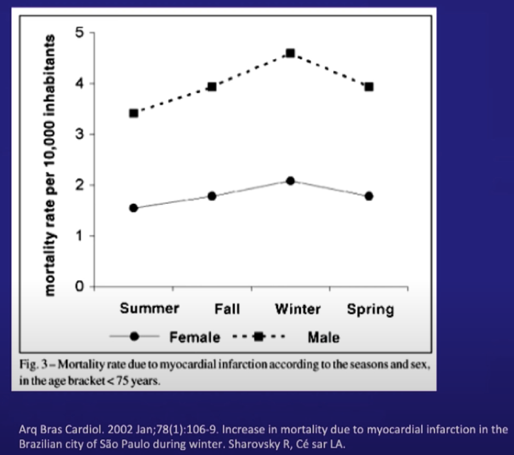
How to Optimize Your Vitamin D and Nitric Oxide?
The sun has a wide light spectrum, but right now we're focused on the "Ultraviolet Rays" and what they do to your body, as it is these which give both benefits and drawbacks.
UVA – Reaches the surface of the earth rather easily and can be received during dawn, noon, and dusk. It has a less significant impact on a person's skin. The most valuable aspect of UVA is its ability to release Nitric Oxide in the skin, and this has been shown to improve longevity. (UVA = more Nitric Oxide)
UVB – Reaches the surface of the earth in higher quantities at noon and less during dawn and dusk when the sun is a greater distance away. UVB is the leading cause of skin damage, but on the flip side helps the skin produce Vitamin D through the utilization of cholesterol. (UVB = more Vitamin D)
UVC – Simply put, this can kill you but you don't have to worry about this, at least not from the sun. (UVC = Cell Damage)
But, What's the Best Solution?
Ideally, try and get your sun exposure in the earlier hours of the day or at the tail-end of the day. This maximizes your UVA exposure, softens your UVB exposure and gives you a great mix of the benefits of Nitric Oxide and Vitamin D.
Pro Tip!
By increasing your intake of omega-3 fatty acids you are able to withstand longer periods of sun exposure without your skin getting damaged. Equally so, avoid omega 6 fatty acids (aka seed oils) as this damages the skin.
